Notice: Pre-Order Product
This is a pre-order product. After receiving your order, this product requires 1-2 weeks for processing before shipping as it will be ordered from the manufacturer.
Please note that cancellations for pre-order products are not accepted after purchase. In case of delays, discontinued product, or stock issues, we will notify you directly. Thank you for your understanding.
What is Aspergillus Sojae?
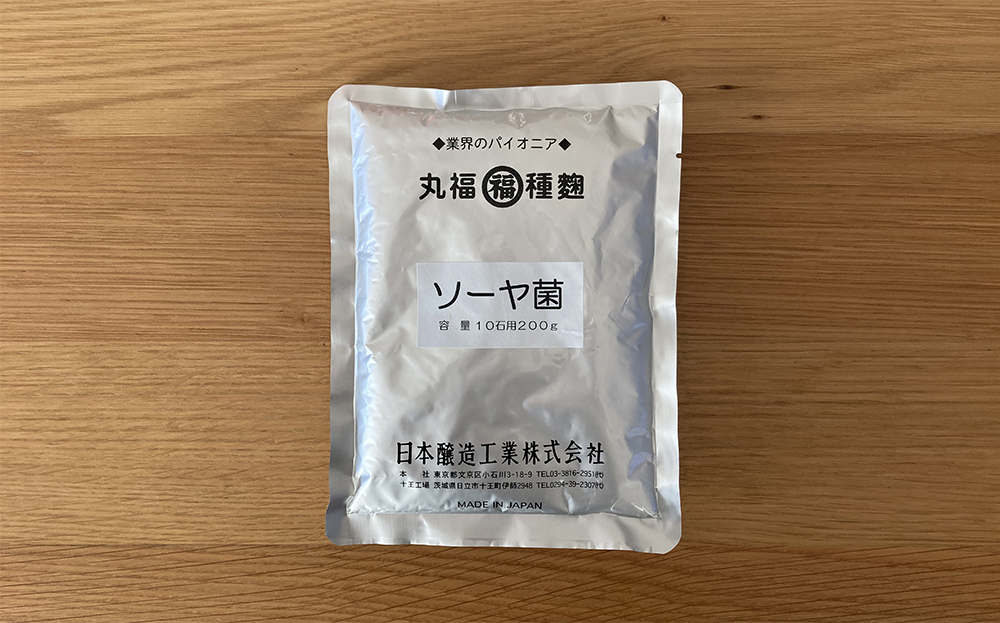
Aspergillus Sojae is a type of koji spore that is specially used for making soy sauce and miso. Unlike the common koji spore starter (Aspergillus Oryzae), A.Sojae will result in koji with less sweetness, making it perfect to make salty fermented food like soy sauce or miso.
While sake making requires koji starter that has a high ability to decompose rice starch, during soy sauce or miso making, it’s important to use koji starter that can decompose soybean protein, which is the raw material of soy sauce and miso. When A. Sojae and A. Oryzae are compared with each other, it’s clear that A. Sojae has more protease genes that A. Oryzae and work better when decomposing soybean protein. That is why A. Sojae is great for soy sauce brewing.
What’s Special About This Koji Starter?
This koji starter is packed with Aspergillus Sojae bacteria. As soon as it is kept in a warm temperature, the spores can grow quickly. The starter is characterized by low alpha-amylase and high proteinase with the distinctive scent of A. Sojae fungus. It is a spore starter that has been favored for a long time with little coloring.
About The Maker
Nihon Jozo has been specializing in making koji starters, seasonings, brewing appliances, and brewing materials for more than 105 years. With a long history and dedication, high quality can be expected from the products.
How To Make Soybean Koji
Soybean koji is the most common type of koji to make soy sauce or miso. Feel free to use this soybean koji tutorial as a reference.
*Turn on English CC for subtitles.
Tools and Ingredients of Making Soybean Koji
Required Tools and Ingredients
・Soybeans (proper amount as you like)
・Koji starter for beans
・Steaming cloth (2 sheets)
・Koji fermenter (fermentation device; you can also use Yogurtia or food warmer)
More Convenient If You Have
・Thermometer
・Rice paddle
・Steaming cloth (2 sheets)
・Koji fermenter (fermentation device; you can also use Yogurtia or food warmer)
The Steps of Making Soybean Koji
1. Wash the soybeans, then soak it in water.
2. Boil the soybeans.
3. Sprinkle the koji seed (koji starter) on boiled soybeans (seeding).
4. Keep the soybeans warm.
5. Stir the in-fermenting-process soybeans (First maintenance of koji) (After 18-22 hours)
6. Second maintenance of koji (After 22-42 hours)
7. Complete!
With these 7 steps, you can make high quality soybean koji.
Let's start making koji!
Step 1. Wash the Soybeans, then Soak Them in Water

Wash the soybeans properly.
After that, discard the dirty water. Then add clean water in the bowl until the soybeans are completely immersed in water.
Wrap it with plastic wrap, and soak the soybeans for about 24 hours.
When the temperature is high such as in summer, put it in the refrigerator.
Step 2. Boil the Soybeans
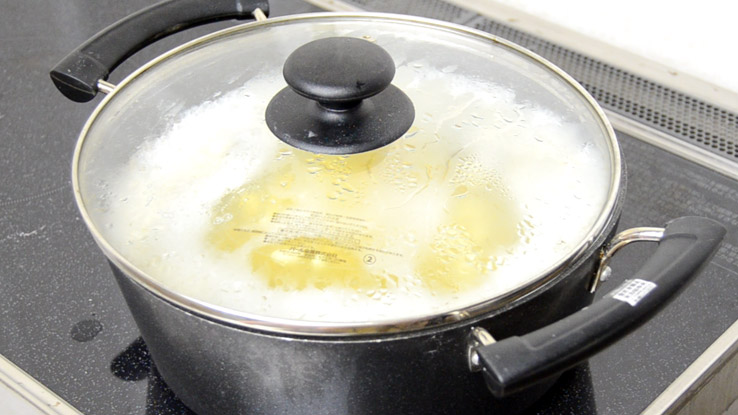
Pour the soybeans along with the water used to soak them into a boiling pan, then boil the soybeans.
First, boil the soybeans with high heat until the hot steam rises, then turn to low heat and steam them for 2-3 hours.
If the soybeans became soft enough that when you pinch it with your thumb and index finger it can be easily crushed, discard the hot water. And so the surface of the soybeans can be dried, move the pot and let the hot steam flow away.
Step 3. Sprinkle the Koji Seed (Koji Starter) on Boiled Soybeans (Seeding)
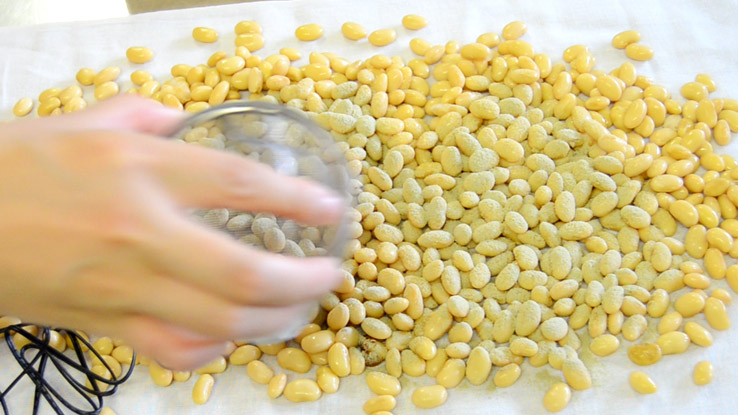
When the soybeans are bolied up, put and spread it on a clean tray or a clean dish cloth.
Please be careful not to burn yourself.
Use a fan to cool the temperature of soybeans.
When the temperature of the soybean have cooled down to 36 degrees, sprinkle the prepared koji tarter seed and mix it thoroughly (this step is called "seeding").
The amount of koji starter is usually about 2g of koji starter on 1kg of soybeans.
For people who try to make barley koji for the first time, it's easier to succeed the breeding of the koji starter if you use 2 times of that amount.
During this step, please prepare the koji fermenter/warming device and warm it until 30℃.
Step 4. Keep the Soybeans Warm

After the seeding step, move the soybeans to a koji box and spread them flat and thin (about 2-3 cm of thinkness).
So that the soybeans isn't dried off, cover the flattened soybeans' surface with a firmly squeezed clean cloth (disinfect the cloth first with boiling water).
Put it in 28-30℃ pre-warmed fermenter device.
If you keep a humidity by putting a tray of water in the fermenter, there is no need to cover with cloth.
Since soybean koji is more vulnerable to various bacteria than rice koji and barley koji, keep the soybean temperature below 30℃.
For making this koji, the optimal temperature for breeding the koji starter (Aspergillus oryzae) is around 28-30 degrees. Please keep the rice warm at this temperature.
Please be careful for not to drop the temperature.
Step 5. Stir the In-fermenting-process Soybeans (First Maintenance of Koji) (After 18-22 hours)
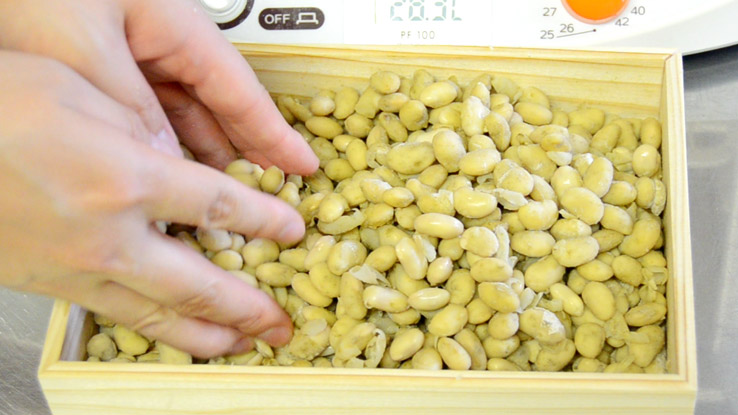
By this time, the temperature of soybeans will rise.
Stir (mix) the soybean, lower the temperature and make the thickness of soybean same on all the surfaces.
Stir the soybeans quickly so that the temperature of soybeans doesn't extremely go down.
Also, when stirring soybeans, wash hands and utensils thoroughly.
Step 6. Second Maintenance of Koji (After 22-42 hours)
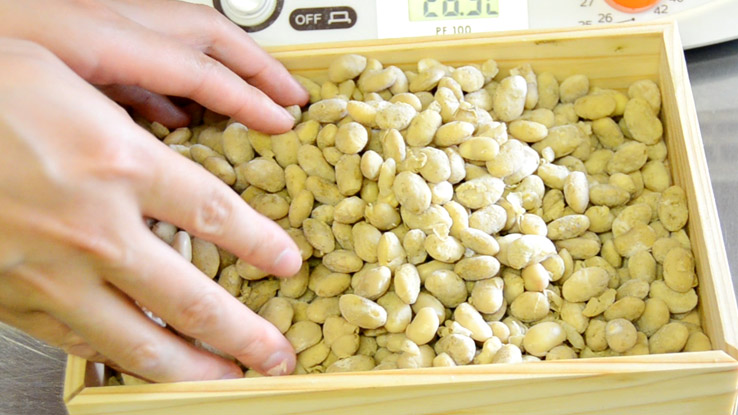
When 5-6 hours passed after the first maintenance of koji, the koji seed will breed further and the soybean temperature will rise again.
Please take out the koji box from the fermenter device and lower the soybean temperature to 28-30℃.
When the temperature of soybeans rises too much, please lower the temperature by stirring the soybeans.
If the temperature rises up too much, contamination by natto bacteria etc. will occur, causing the failure of the koji's completion, so please be careful.
To not raise the temperature of the soybean too much is the important point in the making of soybean koji.
Step 7. The Completion of Soybean Koji
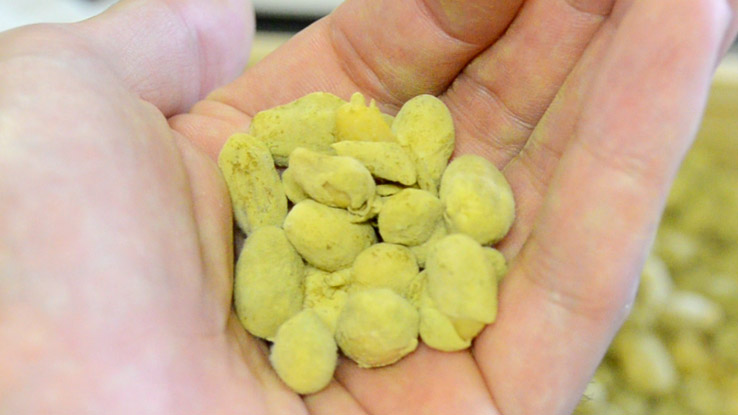
If the surface of the soybeans is covered with green spores and the soybeans became loose, then the soybean koji is ready. Please check the breeding/growth condition of koji.
If there is no problem in the breeding condition of koji starter on soybean koji, the it's completed.
You can use this finished soybean koji to make miso, etc. in your home!
How to Store Soybean Koji
After the soybeans koji is completed, it's recommended to use the koji as soon as possible. Even if it is kept in the place where the temperature is low and the wind circulation are good, if the mass of the koji rice is thick, the fermentation will not stop and the quality of the koji may deteriorate.
If you plan to save the koji rice for 1-2 days after it's finished, please untangle the clumps in koji rice by massaging it, then spread it as thin as possible and keep it in a cool place.
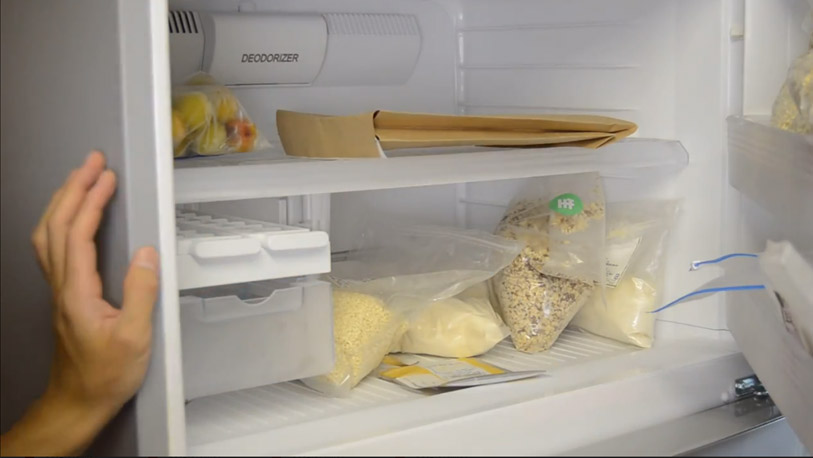
Store in the refrigerator: about 2-3 weeks
When storing in a refrigerator, put it in hygroscopic (material that tends to absorb moisture from the air) paper bag.
In the refrigerator, it's possible to save the koji rice for about 2-3 weeks.
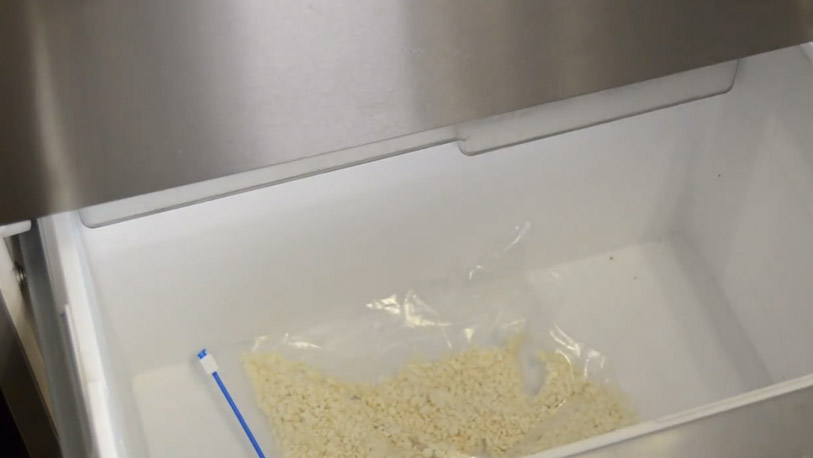
Store in the freezer: about 1-3 months
If you plan to use it later for a long time, put it in a zip lock (a plastic bag with zipper/fasterner), etc. and keep it in the freezer.
It's possible to save the koji rice for about 1-3 months in freezer.
What A Good Soybean Koji Is
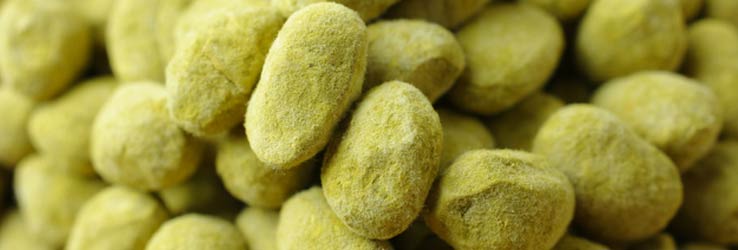
From a good soybean koji, a good aroma like roasted beans will come slightly. If there is an unpleasant smell like a sour smell or a nasty smell, it's most likely that germs have entered and rotted.
Also, spores are grown strongly on good soybean koji. Its texture will be crumbly and not sticky.
If you want to check it more detail, cut the bean grain with a knife and look at the cross section. A good soybean koji has a thin white layer between soybeans and spores.
| Product Details | |
|---|---|
| Name | Koji Starter For Soy Sauce - Powdered Aspergillus Sojae Fungal Seed 200g (For 1800 liters) |
| Netto | 200g |
| Expiry | 180 Days (In dry and cool area, within 10℃~15℃) |
| Manufacturer | Nihon Jozo, Japan |
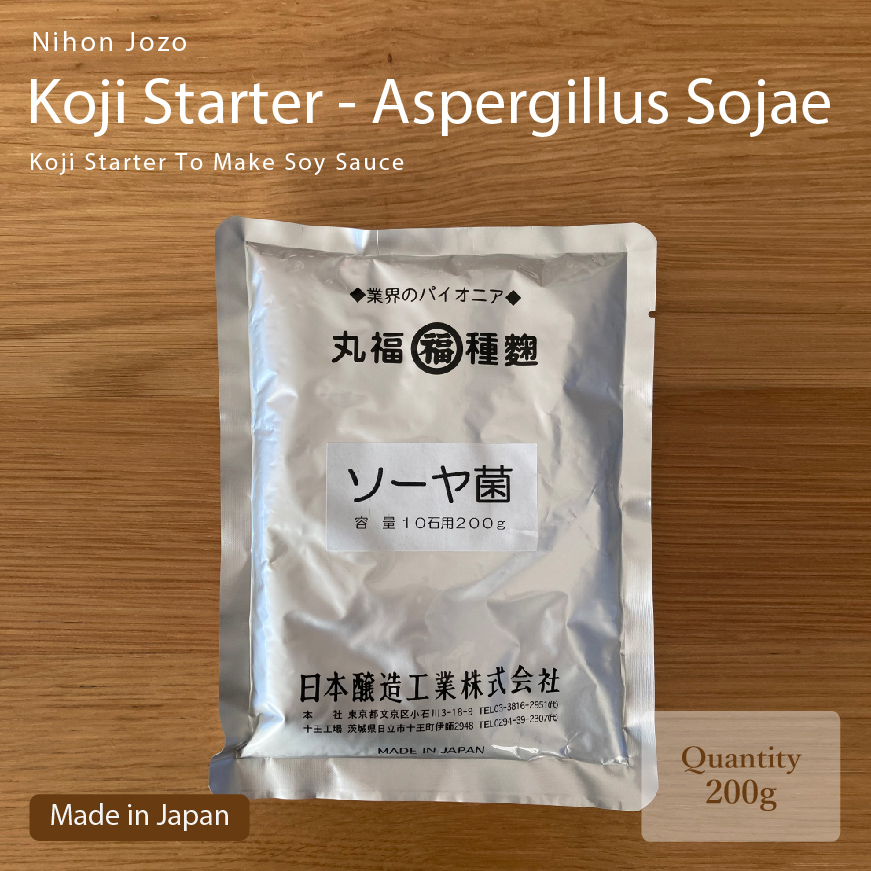
Why shop with KAWASHIMAYA?
- We sell only authentic and high-quality products
- 100% Made in Japan products are as listed
- Organic and non-GMO products are as listed
- All products are new and have long expiry date
- All products are handled directly from our warehouse in Tokyo, Japan
- Easy and secure payment options with CC or PayPal
- Safe and insured international shipping methods
- English and Japanese customer support by email
- Wholesale discount prices available for selected products
- Find insightful articles from KAWASHIMAYA Blog
- Get exclusive discounts for KAWASHIMAYA Newsletter subscribers
- Easy shop on KAWASHIMAYA Amazon USA

![[Pre-Order] Koji Starter Powder For Shoyu - Aspergillus Sojae 200g (For 1800 liters) Best for Soy Sauce - Product of Nihon Jyozo Kogyo, Japan](http://thejapanstore.jp/cdn/shop/files/Nihon_Jozo_With_Halal_logo_added-13_800x.jpg?v=1740728203)
![[Pre-Order] Koji Starter Powder For Shoyu - Aspergillus Sojae 200g (For 1800 liters) Best for Soy Sauce - Product of Nihon Jyozo Kogyo, Japan](http://thejapanstore.jp/cdn/shop/files/Nihon_Jozo_With_Halal_logo_added-13_150x.jpg?v=1740728203)
![[Pre-Order] Koji Starter Powder For Shoyu - Aspergillus Sojae 200g (For 1800 liters) Best for Soy Sauce - Product of Nihon Jyozo Kogyo, Japan](http://thejapanstore.jp/cdn/shop/files/Nihon_Jozo_With_Halal_logo_added-13.jpg?v=1740728203)
![[Pre-Order] Koji Starter Powder For Shoyu - Aspergillus Sojae 200g (For 1800 liters) Best for Soy Sauce - Product of Nihon Jyozo Kogyo, Japan](http://thejapanstore.jp/cdn/shop/products/a3058_TOP_en_150x.jpg?v=1740728203)
![[Pre-Order] Koji Starter Powder For Shoyu - Aspergillus Sojae 200g (For 1800 liters) Best for Soy Sauce - Product of Nihon Jyozo Kogyo, Japan](http://thejapanstore.jp/cdn/shop/products/a3058_TOP_en.jpg?v=1740728203)
